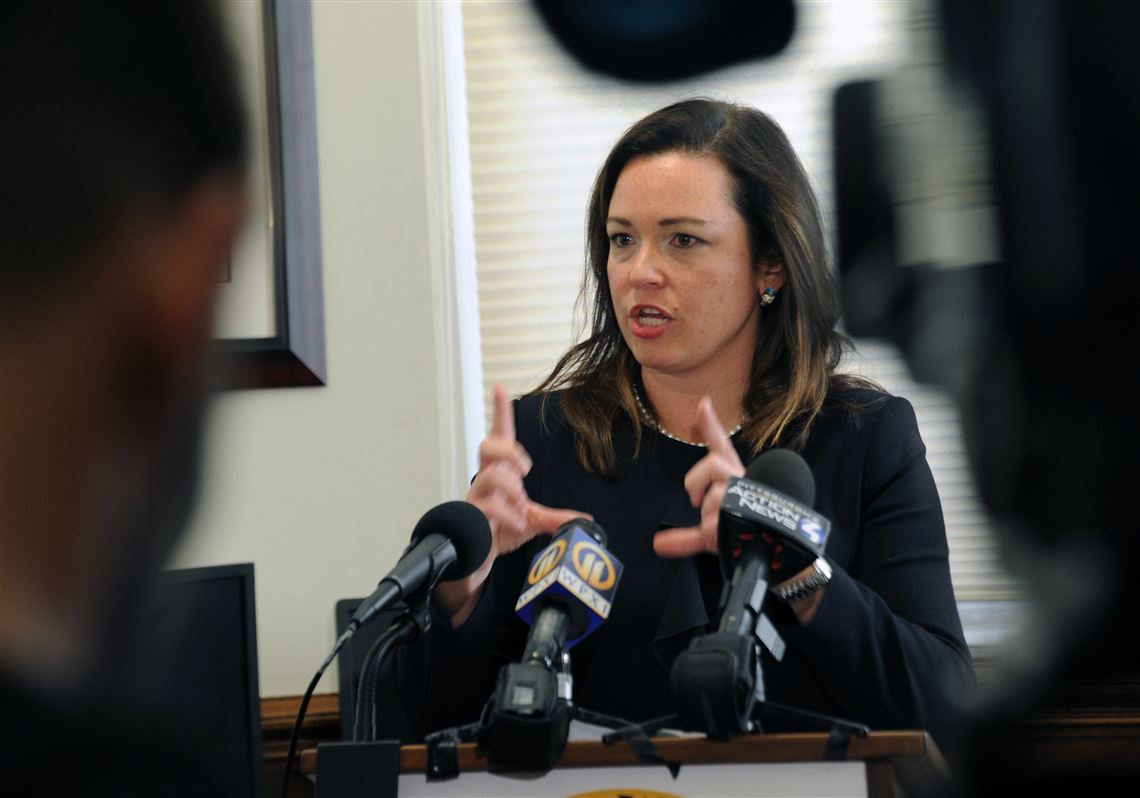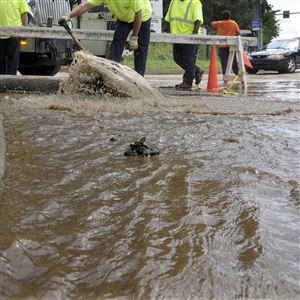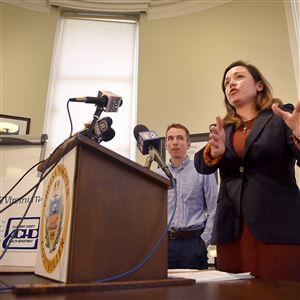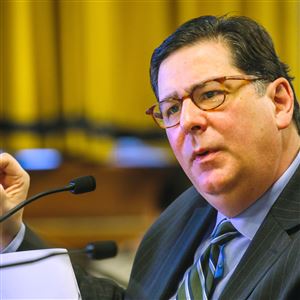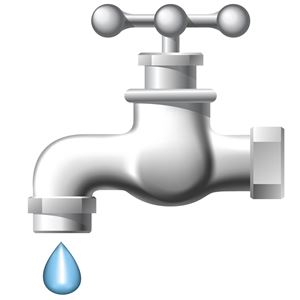Partial replacement of lead water laterals by the Pittsburgh Water and Sewer Authority is endangering the health of city residents, especially children, and should be halted immediately, said Allegheny County Controller Chelsa Wagner.
At a news conference Monday morning, Ms. Wagner said studies show the partial replacement of lead service lines poses a greater danger to water customers’ health than no replacement at all.
“Partial water line replacement is not a solution. It increases the danger,” she said. “When they leave the lead line between the curb and the home, the lead exposure actually increases.”
Ms. Wagner, who is conducting an audit of the PWSA, was critical of Mayor Bill Peduto and the county Health Department for failing to move more aggressively to solve what she called a “public health crisis” related to lead in the city water supply.
She said Pittsburgh should follow the lead of two Wisconsin cities, Milwaukee and Madison, and ban partial replacement of lead water laterals, or the line that runs laterally from the water main to a house.
The PWSA has done partial lead water line replacements at 275 residences scattered throughout most city neighborhoods since January 2016, Ms. Wagner said, and has plans to do an additional 1,500 over the coming months.
Because water tests last year found lead levels in some residences had climbed unacceptably high, federal and state environmental agencies required the PWSA to each year replace 7 percent of the estimated 25,000 lead service lines in its system that extend from water mains to the curb or private property line.
The authority says it is banned by state law from replacing the privately owned sections of the lead service lines that extend into homes, but Ms. Wagner said that ban was not intended to prohibit action in a crisis.
The PWSA backs state legislation that would allow full replacement of the service laterals.
“Our ultimate goal is to remove all lead service lines, including the privately owned sections,” said Will Pickering, a PWSA spokesman. “We are looking to find a legal pathway to do that, but we are not there yet.”
Mr. Pickering said PWSA contractors, hired to replace the PWSA-owned sections of the service lines, began work May 8. In support of that replacement work, Mr. Pickering said PWSA and the contractors are providing 45-day notices prior to any line digging, written information about how to flush water lines for 30 minutes after the line replacement work is done, lead filters for six months after the work is done and authority-supplied water test kits.
Ms. Wagner had been critical of the PWSA at her news conference for not providing those notification and testing functions.
“We’ve seen the research [that Ms. Wagner referred to]. That’s why we’re providing the six months worth of filters and asking residents to conduct the follow-up testing,” Mr. Pickering said. “But we also have the obligation to replace 7 percent of the lines.”
He said the authority is making progress identifying where those lead lines are by conducting 100s of “curb-box inspections,” accomplished with a camera lowered into a curb box that photographs the underground lines and cn identify if they are made of lead. He said if an inspection identifies lead lines, property owners are notified immediately.
Mr. Pickering also said PWSA is working with the Pennsylvania Department of Environmental Protection to develop a formal consent order to govern the authority’s response to the lead water problem, and provide “additional oversight and scientifically backed decision making.”
Lead contamination of public water supplies has been a much-debated public health issue since 2014 when dangerously high lead concentrations were found in the Flint, Mich., water supply.
Although the PWSA’s lead water levels are near zero when water leaves the treatment plant, federal tests last year show lead levels climbed above the 15 parts per billion federal standard for some homes hooked to the water mains through lead service lines.
Those test findings triggered a federal requirement that PWSA each year replace at least 7 percent of the lead service lines in its service area. PWSA estimates that 20 to 25 percent of its 83,000 customers get their water through lead lines.
Childhood lead exposure can have severe health consequences, affecting mental capacity and causing behavioral problems and learning disabilities.
Don Hopey: dhopey@post-gazette.com, 412-263-1983, or on Twitter @donhopey
First Published: May 15, 2017, 4:27 p.m.







